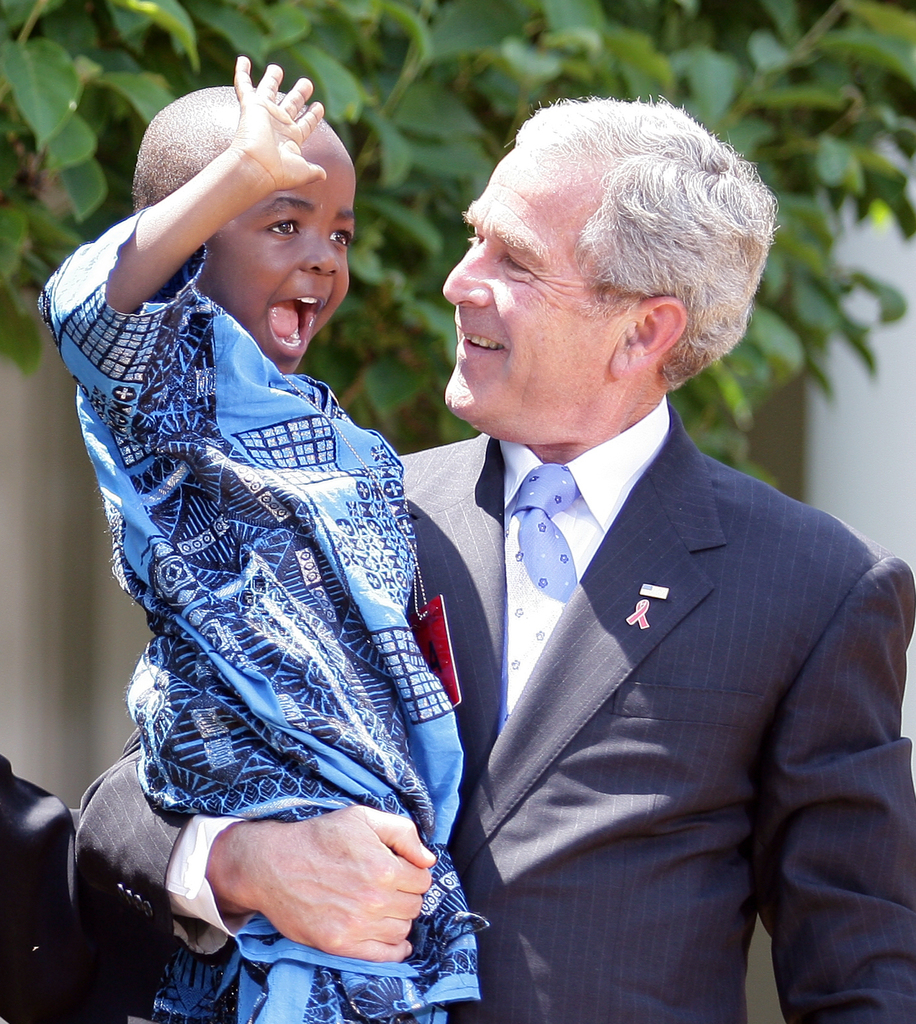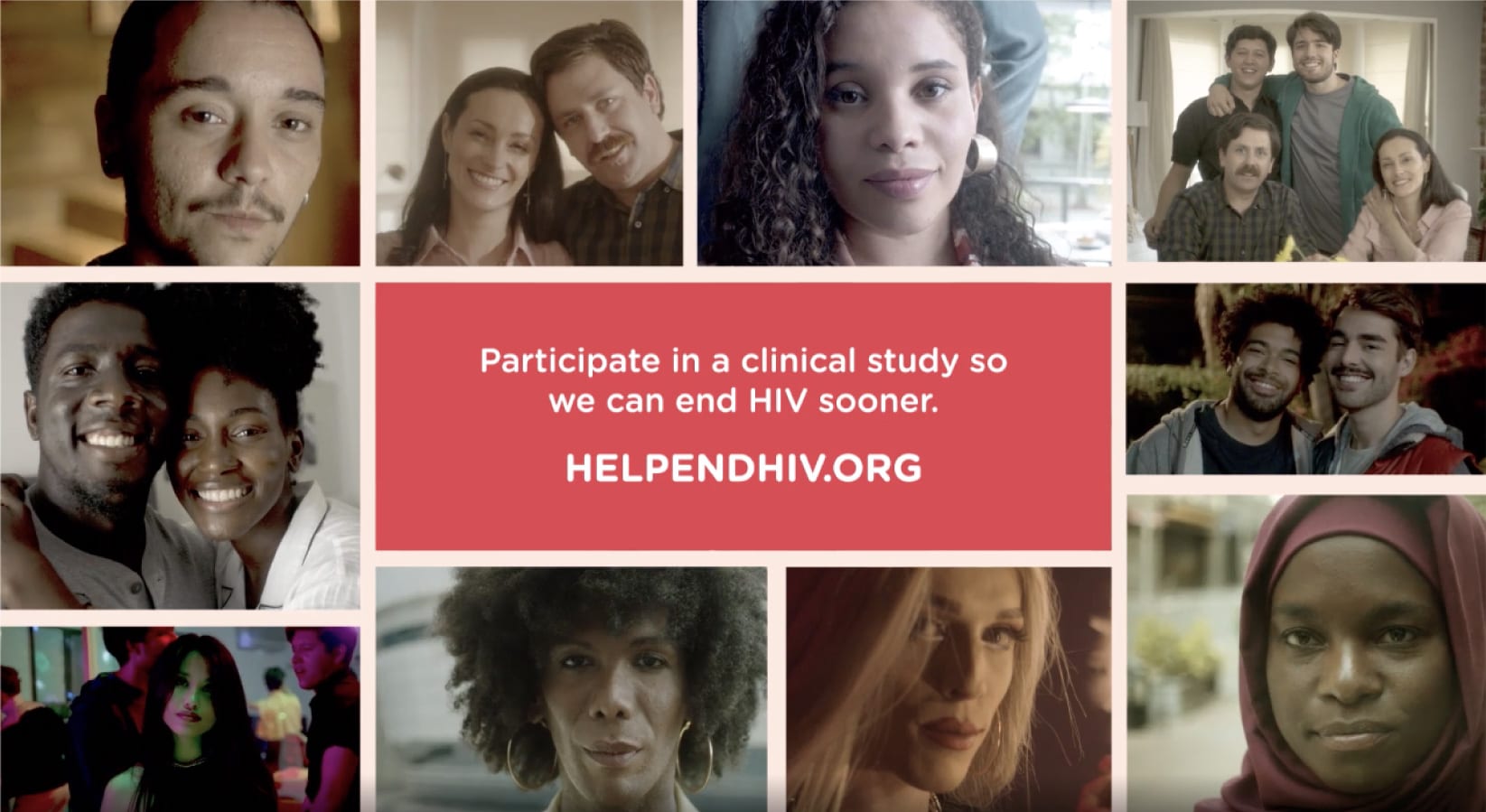To end HIV, we first need to understand where we have been, where we are going, and how together we can help end this pandemic.
Learn more about the path to the HIV vaccine.

To end HIV, we first need to understand where we have been, where we are going, and how together we can help end this pandemic.
Learn more about the path to the HIV vaccine.

More than 35 million people worldwide are currently living with HIV and thousands more acquire HIV daily.
Throughout history, vaccines have been one of the most important tools to end infectious diseases. That is why finding a safe and effective HIV vaccine is a priority. But we cannot do it without the help of volunteers.
Now, thanks to scientific breakthroughs and participation from diverse community members around the world, we are closer than ever to finding vaccines that can end HIV.
HIV: Beginning of a Global Pandemic
An unprecedented virus appears and quickly threatens the entire world. The cities of New York and Los Angeles are the first to report cases.
Researchers from the United States and Europe undertake a tough mission to identify the new infectious agent, but it is Luc Montagnier and his group at the Pasteur Institute who manage to isolate the virus that we know today as the cause of AIDS.

On December 1,1988, the first World AIDS Day is established. Since then, every year all who have died from HIV/AIDS are remembered and the fight to improve access to prevention and treatment services is promoted.

The Quilt, conceived by gay rights activist Cleve Jones and displayed for the first time 2 years later, is created in honor of friends and loved ones who died of AIDS. It is a visual representation of the devastating human cost of the disease.

Founded by the National Institutes of Health, the HIV Vaccine Trials Network establishes an international network of clinical study sites for experimental HIV vaccines.
As a result, VAX003 and VAX004 studies, the first Phase 3 HIV vaccine efficacy trials, are launched.
RV144 Study and the Development for the HIV vaccine
After several years of research, results begin to give hope for the possibliity of a vaccine that can prevent infection.
Seven years later, HVTN laboratory scientists and statisticians, led by Principal Investigator, Dr. Larry Corey, collaborate with the US Military HIV Research Program and the Thai government to analyze potential immune responses that correlate with the risk of infection in the RV144 study.

At the beginning of the decade, 1.5 million cases of HIV/AIDs are reported annually and 27.4 million people are being treated for HIV.

After 40 years of research and tireless work by scientists, communities, and care givers, new breakthroughs in the search for a vaccine against HIV are on the horizon. But to make this possible, we need the participation and support of all of us.
Learn more about HIV vaccine development and volunteer for clinical trials.
In the early 1980s, a mysterious illness affecting gay men is reported by hospitals and doctors around the world.
This is the beginning of an event that soon grips the scientific community and the whole world. Soon, the CDC issues the first official report of what we now know as the HIV/AIDS epidemic.
HIV and Social Impact
Stigma and discrimination spread with the virus adding to the complexity of the response
ACT UP (AIDS Coalition to Unleash Power) is founded in New York City to open the conversation about AIDS and the people living with it. Its goal is to achieve better legislation and healthcare for infected people, and to promote scientific research to eradicate this disease.

HIV: A Fight for All of Us
Advocates, scientists, and the US government find new ways to work together to address the virus and its impact.
AIDS becomes the leading cause of death among Americans ages 25 to 44.
The 11th International AIDS Conference announces the efficacy of HAART, a highly active antiretroviral therapy that rapidly reduces AIDS-related deaths by 47%.
To combat AIDS in the most affected countries, President George W. Bush announced the United States President’s Emergency Plan for AIDS Relief during his 2003 State of the Union Address.

The HIV vaccine study, RV144, begins. It will be the first vaccine candidate to show a positive signal with an estimated efficacy of 31% at 3.5 years after injection.
The COVID-19 Pandemic and Advancements
Learnings in vaccinology and immunology from COVID-19 research provide scientific breakthroughs that can move HIV vaccine research forward more quickly.
40 years later, the world is hit by another pandemic, COVID-19, which leads vaccine researchers to scientific advances that can be applied to vaccines to prevent HIV.
As a result of learnings from decades of HIV research, mRNA vaccines are developed against COVID-19 that show greater than 90% efficacy. The use of mRNA will make it possible to more quickly develop and iterate potential vaccine candidates to prevent HIV.
That same year, the AMP study is published, the first study to show that broadly neutralizing antibody infusion can help prevent HIV infection.

HIV: Beginning of a Global Pandemic
An unprecedented virus appears and quickly threatens the entire world. The cities of New York and Los Angeles are the first to report cases.
In the early 1980s, a mysterious illness affecting gay men is reported by hospitals and doctors around the world.
This is the beginning of an event that soon grips the scientific community and the whole world. Soon, the CDC issues the first official report of what we now know as the HIV/AIDS epidemic.
Researchers from the United States and Europe undertake a tough mission to identify the new infectious agent, but it is Luc Montagnier and his group at the Pasteur Institute who manage to isolate the virus that we know today as the cause of AIDS.

HIV and Social Impact
Stigma and discrimination spread with the virus adding to the complexity of the response
ACT UP (AIDS Coalition to Unleash Power) is founded in New York City to open the conversation about AIDS and the people living with it. Its goal is to achieve better legislation and healthcare for infected people, and to promote scientific research to eradicate this disease.

On December 1,1988, the first World AIDS Day is established. Since then, every year all who have died from HIV/AIDS are remembered and the fight to improve access to prevention and treatment services is promoted.

HIV: A Fight for All of Us
Advocates, scientists, and the US government find new ways to work together to address the virus and its impact.
The Quilt, conceived by gay rights activist Cleve Jones and displayed for the first time 2 years later, is created in honor of friends and loved ones who died of AIDS. It is a visual representation of the devastating human cost of the disease.

AIDS becomes the leading cause of death among Americans ages 25 to 44.
The 11th International AIDS Conference announces the efficacy of HAART, a highly active antiretroviral therapy that rapidly reduces AIDS-related deaths by 47%.
Founded by the National Institutes of Health, the HIV Vaccine Trials Network establishes an international network of clinical study sites for experimental HIV vaccines.
As a result, VAX003 and VAX004 studies, the first Phase 3 HIV vaccine efficacy trials, are launched.
To combat AIDS in the most affected countries, President George W. Bush announced the United States President’s Emergency Plan for AIDS Relief during his 2003 State of the Union Address.

RV144 Study and the Development for the HIV vaccine
After several years of research, results begin to give hope for the possibliity of a vaccine that can prevent infection.
The HIV vaccine study, RV144, begins. It will be the first vaccine candidate to show a positive signal with an estimated efficacy of 31% at 3.5 years after injection.
Seven years later, HVTN laboratory scientists and statisticians, led by Principal Investigator, Dr. Larry Corey, collaborate with the US Military HIV Research Program and the Thai government to analyze potential immune responses that correlate with the risk of infection in the RV144 study.

The COVID-19 Pandemic and Advancements
Learnings in vaccinology and immunology from COVID-19 research provide scientific breakthroughs that can move HIV vaccine research forward more quickly.
At the beginning of the decade, 1.5 million cases of HIV/AIDs are reported annually and 27.4 million people are being treated for HIV.

40 years later, the world is hit by another pandemic, COVID-19, which leads vaccine researchers to scientific advances that can be applied to vaccines to prevent HIV.
As a result of learnings from decades of HIV research, mRNA vaccines are developed against COVID-19 that show greater than 90% efficacy. The use of mRNA will make it possible to more quickly develop and iterate potential vaccine candidates to prevent HIV.
That same year, the AMP study is published, the first study to show that broadly neutralizing antibody infusion can help prevent HIV infection.
After 40 years of research and tireless work by scientists, communities, and care givers, new breakthroughs in the search for a vaccine against HIV are on the horizon. But to make this possible, we need the participation and support of all of us.
Learn more about HIV vaccine development and volunteer for clinical trials.


Participate in an HIV vaccine study today, and help end HIV.

Volunteers are crucial to finding safe, effective vaccines.
When science and people come together, we can achieve amazing things.
Our studies are conduced at over 40 research sites across the US.